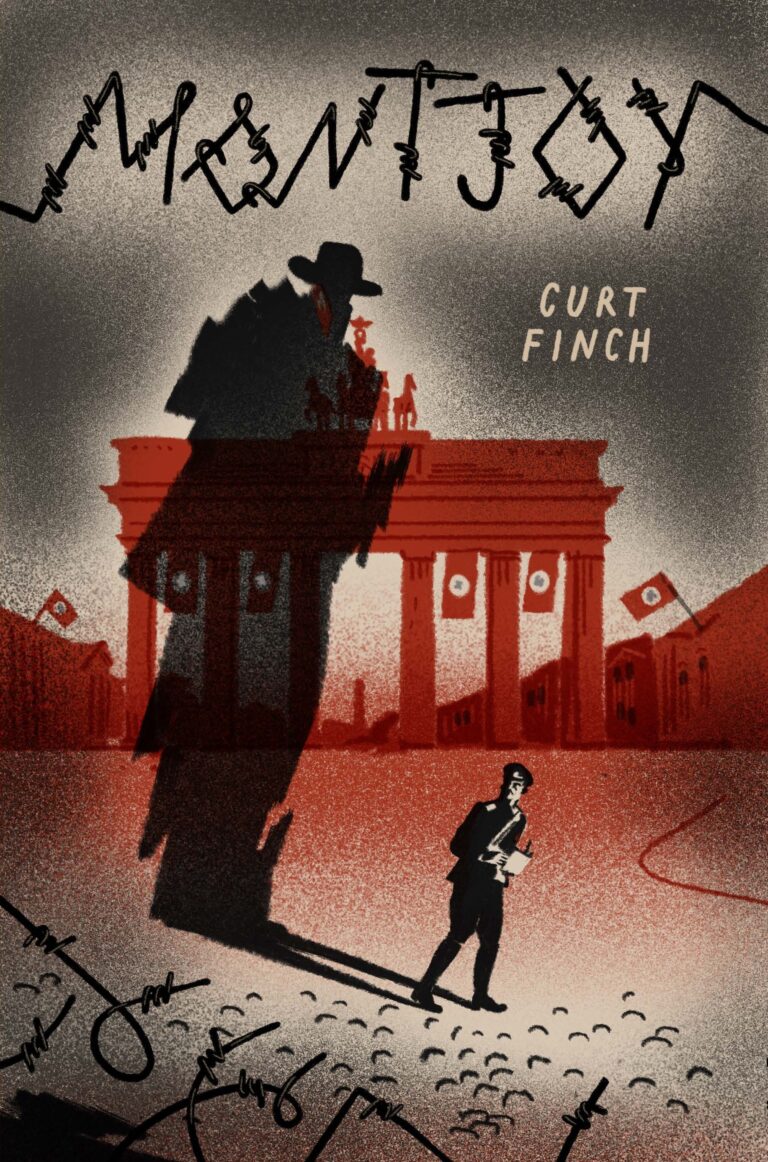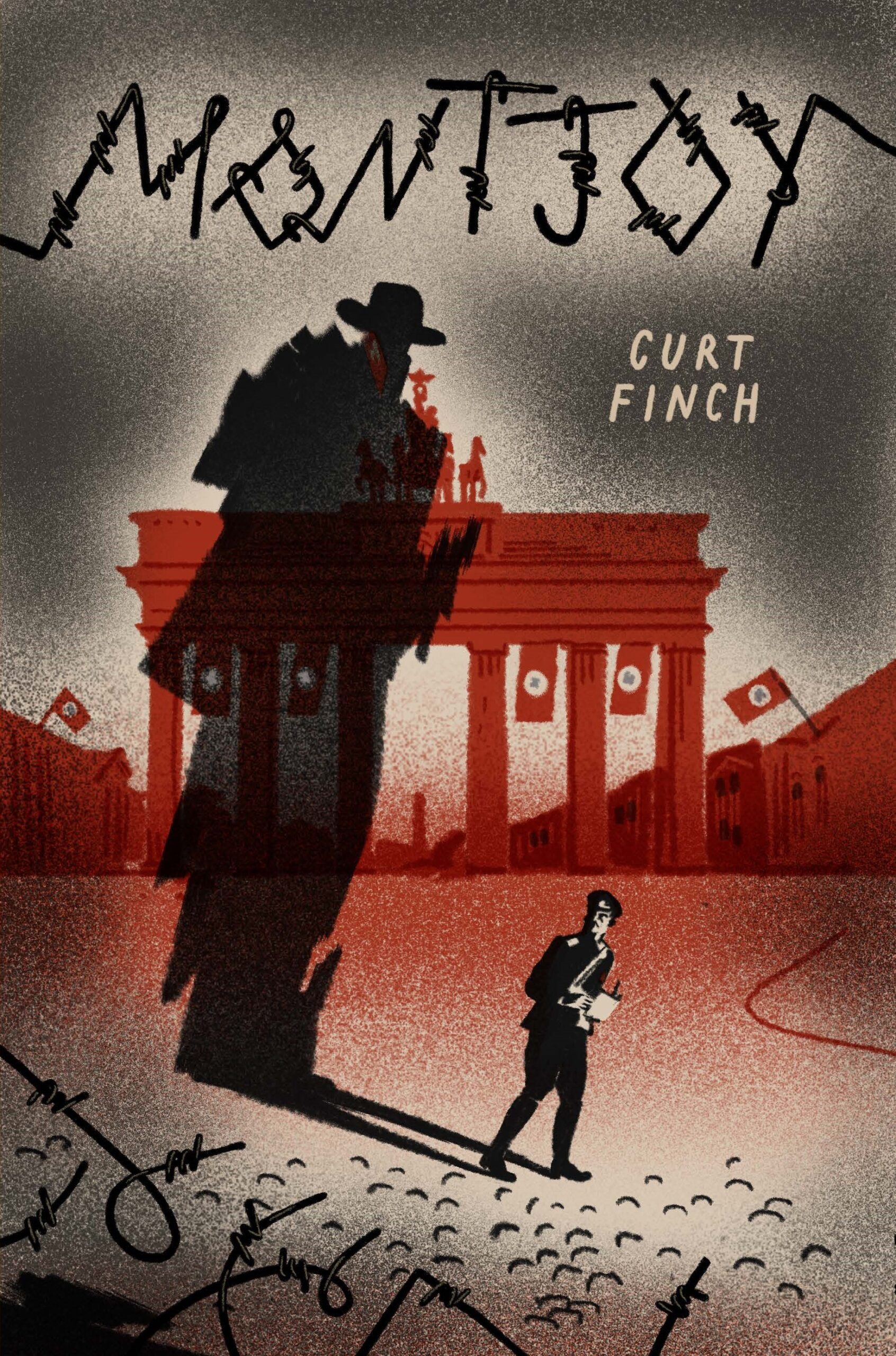When a box containing a merkbuch (a notebook) and other objects (including cigarettes, a death’s head ring, and a copy of an American pulp magazine) is discovered beneath the floor of a former concentration camp, a Jewish writer and academic is called in to investigate.
Tasked with helping to assess the contents of the box, the academic sets about transcribing the notebook, which seems to have once belonged to an SS officer named Martin Ulbrecht Tauber. Charting Tauber’s experiences as the Nazi party rose to power, the notebook includes numerous incidents that test the academic’s understanding of the period. How reliable a narrator is Tauber? Did a masked vigilante really attack the Gestapo on the eve of WWII? Blending the facts and fictions of the notebook with his own personal traumas, the academic soon finds himself questioning what is real and whether stories and self-deception are a mechanism for disguising guilt.
MONTJOY is an intriguing puzzle-box of a novella. Told in the first person, author Curt Finch realistically adopts the prose style of the academic. Though effective, the precision of Finch’s ersatz academia can sometimes render much of the narrative rather ponderous. The decision to include original German words adds verisimilitude to the prose, requiring the pages to be studded with superscript footnote indicators that lead to translations and other clarifying citations. This stylistic choice does have its drawbacks, leading to a number of rather unwieldy sentences mixing the two languages. For example: “These schreckgespenster surrounded Tauber like braunhemden, howling, laughing and swarming him, sinking their fangs into every part of his body.” The first German word, schreckgespenster (translation: spectres), is evocative and poetic, conjuring an otherworldly menace and warranting its use. The second German word, braunhemden (translation: brownshirts), necessitates non-German readers make a second journey to the footnotes within a single sentence. Using the English translation of the word brownshirts in the text would have worked perfectly well. Moreover, as the book is presented in English, a more judicious choice may have enhanced the ease of reading and, by extension, the reader’s enjoyment of the text.
As an experiment in form, MONTJOY could be considered a success, but its sometimes ponderous and precise academic stylings lack the momentum and tension to seriously engage the reader. That said, there are passages where Finch allows his narrator to really fly. These are mostly as he is transcribing/presenting Tauber’s story—as in this extract, where Tauber is describing the Ungeist, the demon that is central to this story: “The eyes are utterly devoid of reason, yet they’re strangely inviting, small, midnight pearls set close together under the brim, lucid and raving like two flames meeting on the body of a burning heretic bellowing the name of God.” When Finch is using his narrator to recount Tauber’s tale, the prose zips along. When the voice is that of the academic alone, it is all rather mannered and dry.
The author’s choices in creating a somewhat disengaged narrative voice for his character are solid; it’s just that some readers may find the often dispassionate prose rather off-putting. However, for those prepared to engage with the text, MONTJOY will prove a memorable novella.
By using the mechanism of a story within a story, Curt Finch’s MONTJOY is able to investigate ideas of the reliability of memory and the methods of storytelling to address trauma.
~Kent Lane for IndieReader


